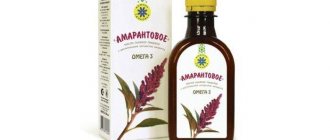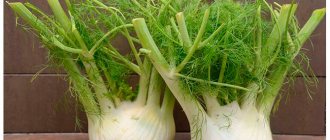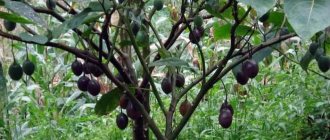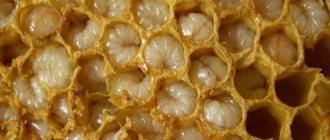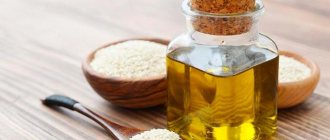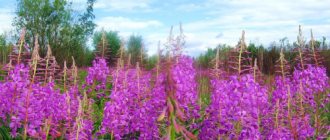Kermek (also called red katran, lemon goldenseal, meadow kermek, sunflower) is a herb that has been used for many years as a medicinal drug.
Traditional medicine recommends taking a little time in the summer and stocking up on valuable components for home remedies - the remedies can help with many serious ailments.
In order to have the most effective effect on diseases, you should not immediately start taking decoctions and infusions - first, it is better to familiarize yourself with the main characteristics of the herb, study contraindications, and choose a suitable recipe.
Brief description of sunflower, growth
Kermek is a herbaceous perennial, usually not exceeding 50-60 cm in height. In favorable conditions, the sunflower can grow up to 80 cm. The grass has a thick root, the main shoot is covered with scales.
The stem is usually bare, the leaves are located only in the lower part of the plant. Peduncles of red katran appear from the basal rosette. The flowers are violet or lilac, collected in dense paniculate-thyroid inflorescences.
Flowering begins in mid-summer and continues until autumn, ending with the formation of purple-brown fruits. The box is filled with numerous small seeds.
Sunflower grows throughout the Russian Federation, most often found in the European part. It is easy to detect thickets of kermek in Siberia, Kazakhstan, and Asia.
Typically, grass occupies moist soils - the banks of reservoirs, swampy meadows, and the coastal zone of the sea. You can also find lemon goldenseal in salt marshes and saline steppes.
Description of Kermek
The plant belongs to the pigweed family. The name is translated as lawn, clearing. It is also called limonium and can be found in the Mediterranean and Central Asia. There are many types of Kermek in Russia. Loves salty soils most of all. The name is also popularly known as tumbleweed. Kermek is distinguished by a perennial rhizomatous system; the rosette has a large number of basal leaves. It is very rare to find a shrub or subshrub. Kermek flowers are yellow, pink and purple, can be collected in single or multi-flowered spikelets, they prefer to be collected in loose or dense spikelets. Kermek is distinguished by a spherical inflorescence, which is located on a round peduncle. The corolla has a dry cup. It begins to bloom in mid-summer and continues until the onset of frost.
It is the kermek root that is most valued, it needs to be specially dug up in the fall, then washed thoroughly, and do not forget to get rid of thin roots and damaged parts, then dried in the shade outside, this can be done in a special dryer, the temperature should not be higher than 60 degrees . You can store it for no more than three years, because then it loses all its beneficial properties.
Growing this type of plant is not difficult, it does not require constant moisture, and it does not need to be constantly watered. The bush also adapts well to frost and is resistant to it.
But you must take into account that limonium cannot be planted near groundwater.
Because the roots can go down, then when they are dug up, they begin to get damaged.
The plant is best propagated by seeds; it is best to sow them in early spring; this will require special pots and a nutrient mixture; in August, Kermek can be transplanted into the garden. The plant can easily take root in different soils if it has enough lighting.
A special species is Gmelin's kermek; it is a herbaceous plant and can reach a height of up to 40 centimeters. It is distinguished by a fleshy, thick taproot and a short stem. Limonium is widespread in the West and East of Siberia, in Russia, Kazakhstan, and Central Asia. Likes to grow on the seashore, near dry steppes and salt lakes. The root and aerial parts are actively used in traditional medicine. Because the root of Kermek Gmelin contains many useful substances, such as: coumarin, carbohydrates, tannins, anthocyanins, phenols. It is good to take infusions for those who suffer, it will help solve this problem and increase blood pressure to the desired level. A decoction based on the root of Kermek Gmelin is one of the best antimicrobial drugs, so it is used to treat the inflammatory process in the small intestine and gastric walls.
Collection, rules for drying Kermek, storage
Homemade medicines are prepared only based on sunflower root. It is recommended to use middle-aged grass to collect plant materials. Young or old kermek contains a small amount of useful elements; herbal compositions are not particularly valuable.
Rinse the dug up roots of the house with cold water, cut into small pieces or long strips. Place to dry on baking sheets or special lattice surfaces. If metal products are used, you should first cover them with thick cardboard and gauze cloth.
To dry, send plant materials under sheds, in a dark, dry attic. Provide continuous ventilation, otherwise the process will take a lot of time, and the risk of debate increases. While drying, stir the grass periodically to ensure uniform drying.
Article for you:
Yarrow: beneficial properties and contraindications, use in folk medicine and cosmetology
Place the prepared kermek root particles into prepared containers (glass jars, plastic sealed containers, cardboard boxes). If it is possible to immediately send the raw materials to a warm, dark room with low humidity after drying, it is allowed to use canvas bags for storage.
The healing properties of sunflower do not decrease for three years. It is recommended to periodically check the condition of the root - if the particles are damp, slightly dry the valuable component of home remedies in the oven.
You should not look for kermek in a pharmacy - official medicine does not recognize the healing qualities of the herb. To carry out home treatment, you will have to independently collect valuable plants for preparing decoctions and tinctures. It is recommended to go for plant materials to clean areas, away from large industries and highways.
Useful properties and uses of Kermek
Useful properties of Kermek
Kermek is a perennial herbaceous plant used for a long time as a healing drug. It is quite effective for various ailments. The roots of the plant contain tannins (up to 23%), gallic and ellagic acids, and phytoncides. In alternative medicine, this herb has gained universal recognition as an effective astringent and hemostatic agent.
The root of the plant is especially widely used in the treatment of diseases. It is dug up in the fall, washed, simultaneously removing thin roots and damaged parts, and then dried under a canopy in the air or in special dryers at a temperature of 50–60 degrees. The shelf life of finished raw materials is no more than three years.
Application of Kermek
Traditional medicine has long noted the usefulness and even indispensability of this plant in the treatment of many diseases. It has anti-inflammatory and analgesic properties; as a result of its use, a pronounced wound healing effect is observed. Decoctions and powder from the roots are good for diarrhea and hemorrhoids, heavy menstruation and postpartum bleeding.
External use of Kermek - in the form of lotions and rinses - is recommended for eczema and gangrene, impaired water-salt metabolism, inflammation of the throat and oral cavity.
Patients with acute diseases of the gastrointestinal tract also note an improvement in their well-being and appetite after systematically taking medications from this herb. It is also effective for dysentery and catarrh of the stomach with high acidity, its strengthening effect is confirmed by clinical observations.
Decoction 1: take 40 g of crushed roots in half a liter of water, bring to a boil and simmer over low heat for 7-8 minutes, then let the decoction brew for 2 hours and filter. It is recommended to take the medicine before meals 3-4 times a day, 1/3 or 1/2 cup. This remedy is recommended for uterine fibroids.
Decoction 2: boil 100 g of crushed plant roots in 1.5 liters of water for 7–10 minutes, filter after cooling. We make lotions from the broth and wash the eczematous areas.
Kermek root
It is thanks to the healing properties of the root that this herb is so widely used in folk medicine. Powders and decoctions from Kermek root help with various diseases, among which acute gastrointestinal diseases and even salmonellosis can be highlighted. An infusion of kermek roots in combination with other medicinal herbs is used in the treatment of stomach ulcers.
Article on the topic: Amaranth spicata (thrown back, bent) - beneficial properties, description
The fine powder of this medicinal root helps to effectively cope with dysentery, hemorrhoids, inflammation of the mouth and pharynx, chronic hemoptysis and malaria. It is often used to treat gynecological diseases and internal bleeding. Typically, the root of the plant is consumed in the form of a 10–20% decoction or 10% vodka tincture. In addition, a 10% wine tincture is also used, which can easily cope with excessive bleeding during menstruation.
Kermek flower
The flower of this unique plant, compared to its root, is quite rarely used in folk medicine. It is included in some effective recipes, but is not a predominant part of them. This is an excellent honey plant that produces quite a lot of nectar. One family of bees can produce 30 liters of honey from it per season. During flowering, Kermek flowers take on various bizarre shapes and are distinguished by their unprecedented beauty, for which they have received universal recognition from flower growers and landscape designers.
Growing Kermek
Kermek is a rather original and interesting plant, which, in addition to its medicinal qualities, also has a certain beauty. During flowering, its bush resembles an umbrella in shape, but when the seeds ripen, it takes on a bizarre spherical shape. When growing this grass, you will not encounter any particular difficulties or inconveniences, since this steppe plant does not require much moisture and can go without watering for a long time. In addition, this bush tolerates frosts well and does not die from them.
However, it should be noted that planting the plant near groundwater is not recommended. In this case, the roots begin to go vertically downwards and are very likely to be damaged during digging.
Seed propagation is the best option for this plant. Seeds should be sown for seedlings in March-April in pots with a nutrient mixture - and by the end of August the plant will be ready to move into the garden. It can also be noted that Kermek does not require special conditions and takes root well on any soil with sufficient lighting.
Kermek Gmelina
This perennial herbaceous plant of the Kermek genus reaches a height of 30–40 cm. It has a thick, fleshy tap root and a shortened stem. This species is widespread in Western and Eastern Siberia, the European part of Russia, Central Asia, and Kazakhstan. Kermek Gmelin grows, as a rule, on sea coasts, along the shores of salt lakes or in dry steppes. The roots and aerial parts of the plant are actively used in medicine.
Its root contains carbohydrates, coumarins, tannins, phenols, and anthocyanins. This content of useful substances makes the root of this herb a valuable medicine. Preparations based on it have a strong anti-inflammatory, astringent and hemostatic effect. In addition, their ability to increase blood pressure is noted. A decoction of the roots of Kermek Gmelin is a powerful antimicrobial drug, which is why it is used for inflammation of the small intestines or stomach walls.
Composition, beneficial properties of sunflower
Sunflower rhizome contains a high percentage of tannins, acids, and coumarins.
The plant raw materials contain flavonoids, aromatic carbohydrates, and vitamins. Among the medicinal characteristics of Kermek the following are noted:
- anti-inflammatory;
- capillary strengthening;
- regenerating;
- antimicrobial;
- astringent;
- antispasmodic;
- restorative.
It is recommended to use homemade compositions based on sunflower for diseases of the digestive tract, disorders of the stomach and intestines. Another indication for use is decreased potency, weakening of male power.
Herbal medicines should also be used for diarrhea - the active elements will quickly cope with loose stools and normalize intestinal function.
Kermek Gmelin - treatment, application, description
Gmelin's kermek flower, translated as Limonium gmelinii, another name for the plant sounds like red katran, it is a herbaceous perennial that grows up to 80 centimeters.
Its root is brownish-red at the fracture, it is taplike, quite thick, woody, dark brown in color on top. The stem is somewhat shortened. The leaves of the plant are collected in a small basal rosette, there are quite a lot of them, they can be green or bluish-green, reddish directly at the breaks, their shape is ovoid-oblong or elliptical.
The flowers of Gmelin's kermek are numerous, they are rather small, their color varies from white to bluish-violet, they are collected in small spikelets that form corymbose or pyramidal inflorescences sitting on peduncles. The seeds are ovoid-elongated, purple-brown in color, and their ripening begins in August.
Kermek grass is found in deserts, in dry steppes; you can often see Gmelin's Kermek in the form of extensive thickets. It is mainly localized on saline soils.
Kermek's underground part is used for medicinal purposes, since many chemical compounds are present in the roots, for example, tannins are found, which is why this plant is used for tanning leather, and also as an astringent.
• Collection and preparation
The period of digging up roots occurs in autumn, after which they are washed to remove adhering soil, and then all thin and rotten roots are cut off. Then they are cut into smaller pieces and the raw materials are laid out on a pallet.
It is best to dry the roots in an automated chamber; the temperature in it must be set to no more than 50 degrees; in such conditions, the roots will dry well and quickly, after which they can be laid out in prepared cardboard boxes. In this case, the raw materials must be placed loosely enough to provide them with the necessary ventilation.
Then bags and boxes of dry raw materials are taken for storage in a ventilated room, and used as needed. It is recommended to sell the roots of Kermek Gmelin no later than three years from the date of their preparation, after which they will lose their healing qualities.
• Growing and Reproduction
It is worth saying that Gmelin’s kermek is an unpretentious plant, and it is better to plant it in loose soil; the soil should drain well. The area should be sunny. Reproduction of this representative of the flora is carried out by dividing the bush or using seeds.
• What is the treatment and use of Kermek?
Medicinal potions are prepared from the plant, which have analgesic, anti-inflammatory, hemostatic, and also astringent effects. You can prepare a decoction or infusion from the roots, as well as make a powder from Kermek Gmelin, and they can be used for diarrhea, hemorrhoids, and also in the presence of postpartum bleeding.
An infusion prepared from the roots of this representative of the flora is also used externally, and the drug has a wound-healing effect, and is also effective for rinsing the mouth in case of any inflammatory diseases.
The roots of this plant are often included in herbal preparations that are used to treat certain pathological processes in the stomach, for example, ulcers. The decoction is recommended to be taken orally as an astringent for acute gastrointestinal diseases, which are often accompanied by diarrhea; in addition, this drug can also be used for dysentery.
To prepare a decoction from the roots of this plant, you will need 10 grams of dry raw material; it is first ground so that it acquires a fine structure, after which it is poured into a container, into which 200 milliliters of boiling water is subsequently poured.
Article on the topic: Amonkora - beneficial properties, description
Next, the container is placed on the stove, where the heat should first be reduced, while the drug is brought to a boil and simmered for no more than ten minutes. Then the broth is removed and cooled. Next, you need to filter it; for this you can use gauze, previously folded in several layers.
The finished decoction can be taken orally, a quarter glass up to three times a day. This drug is stored in the refrigerator, and the period for its sale should not exceed five days, since subsequently the liquid may undergo a fermentation process and will not have a medicinal effect on the body.
To prepare the infusion, you will need five grams of roots; they are crushed, then poured with 400 milliliters of boiling water and left for two hours under the lid. Then the drug is filtered through a strainer or gauze, and it can be used for medicinal purposes in doses of 15 or 30 grams immediately before meals.
It should be stored strictly in the refrigerator and used no later than three days from the date of direct preparation, since subsequently it may ferment and will not have a therapeutic effect.
You should not use drugs that contain Kermek on your own; their use can negatively affect your health. Therefore, you must first visit a specialist and consult with him about treatment. And only after the doctor’s approval can you begin to prepare infusions and decoctions and use them for medicinal purposes.
Increasing potency with Kermek tincture
When male performance is weakened or potency is reduced, tincture of sunflower root will bring invaluable benefits. Homemade medicine effectively affects the genitourinary system and has a positive effect on reproductive function. Step-by-step folk recipe:
- Chop fresh sunflower root (you will need 50 grams of plant material).
- Send the vegetable pulp into a dark glass bottle.
- Pour homemade double-purified pervach with vodka (take 300-350 ml of the alcohol-containing component).
- Seal the glass container tightly and place in a cool place (keep away from direct sunlight).
- It will take half a month to infuse; shake the bottle regularly while cooking.
- Strain using a gauze cloth folded in 2-3 layers, squeeze out the cake.
Drink sunflower tincture three times a day, 15-20 ml. Take into account the individual characteristics of the body. If you experience unpleasant discomfort in the abdominal area or other side effects when using alcohol-containing drugs, take the medicine as an aqueous solution - mix with a small amount of water.
Treatment of stomach diseases with sunflower decoction
For stomach diseases at home, unofficial medicine suggests taking advantage of the healing qualities of Kermek and conducting a course of treatment with herbal remedies.
Article for you:
Lavender - beneficial properties and use in folk medicine
A prerequisite is a preliminary consultation with the attending physician; self-medication can result in serious digestive problems and metabolic disorders. Step by step recipe:
- Combine sunflower roots (40 g), cut into small pieces, and cold water (450 ml).
- Place the container on the stove and quickly bring to a boil over high heat.
- Reduce heat and simmer on low for 5 minutes.
- After removing from the stove, do not strain - wait until it cools.
Drink the herbal remedy three times a day, 50-60 ml. Store in the refrigerator, it is advisable to warm it up a little before using.
Alternative treatment should be carried out in courses. The recommended duration of the course is a month, after a break (7-12 days) continue taking the home remedy.
Composition and properties
Kermek Gmelin root is rich in: tannins, coumarins, flavonoids, higher aromatic carbohydrates, anthocyanins, cahetins, glucose, gallic and ellagic acids. Thanks to its composition, the plant has anti-inflammatory, antimicrobial, hemostatic, hypertensive, antispasmodic, astringent and antioxidant effects. In folk medicine, Gmelin’s Kermek is recommended for:
- sore throat, pharyngitis and other inflammatory diseases of the throat and oral cavity;
- malaria;
- catarrh of the stomach with high acidity;
- acute gastrointestinal diseases;
- diarrhea, dysentery;
- hemorrhoids;
- internal and uterine bleeding;
- uterine fibroids;
- salt metabolism disorders;
- eczema.
Infusion for gastritis:
- 2 tbsp. crushed Gmelin kermek;
- 2 tbsp. boiling water
Pour boiling water over the root, simmer over low heat for 10 minutes, then remove from the stove and let steep for two hours. Strain. Drink half a glass three times a day. Infusion for diarrhea:
- 20 g of Kermek Gmelin root;
- 200 ml hot water.
Article on the topic: Bear root - beneficial properties, description
Fill the Kermek with water, bring to a boil, boil for 10 minutes, and then let it sit until it cools. Strain. Take half a glass three times a day. This recipe is also recommended for uterine bleeding. Decoction for uterine fibroids:
- 40 g of crushed root of Kermek Gmelin;
- 500 ml water.
Fill the Kermek with water, bring to a boil over low heat and boil for 8 minutes. Then remove the broth from the heat and let it brew for 2 hours. Strain. Take 1/3-1/2 cup 3-4 times a day before meals. This decoction can also be used for douching and wetting tampons for gynecological diseases.
Decoction for external use:
- 100 g of crushed root of Kermek Gmelin;
- 1.5 liters of hot water.
Pour water over the root, bring to a boil, boil for 10 minutes and let cool. Strain. Use for washing and preparing lotions for eczema. Tincture for stomach and duodenal ulcers:
- 25 g of Kermek Gmelin root;
- 25 g of St. John's wort herb;
- 1 liter of vodka.
Pour vodka over the plant material and place it in a dark place for two weeks. Strain the infusion. Take 1-2 tablespoons three times a day before meals. The recommended course of treatment is 60 days.
For enterocolitis, take 1-2 grams of powder from the root of Kermek Gmelin 2 times a day after meals.
Treatment of diarrhea with sunflower infusion
A rich infusion of Kermek will help cope with diarrhea. Homemade medicine will quickly stop attacks of diarrhea, gently cleanse the intestines, and normalize the functioning of the organ. The product is also recommended for use as a preventive measure for frequent diarrhea - the herb will have a positive effect on the digestive processes.
The most effective treatment is considered to be one started at the first attacks of diarrhea - timely intake of herbal formulations will help stop the problem in the initial stages. Preparation:
- Chop fresh or dry sunflower roots (15 grams) into fine crumbs.
- Place the plant mass in a thermos.
- Bring water (200 ml) to a boil and steam the herbal mixture with boiling water.
- Infuse the product in a thermos for an hour, strain.
Drink the prepared Kermek infusion throughout the day in small portions (just a few sips are enough), recommended intervals are 1-2 hours.
Attacks of diarrhea stop after the first doses, but it is better to strengthen the results by taking the herbal medicine for at least three days.
The use of kermek in folk medicine
Kermek is a medicinal plant that is widely used in modern folk medicine.
Infusion for the treatment of gastritis
Chopped kermek roots, take a portion of 2 tablespoons of this root, then pour 2 cups of boiling water, and simmer for 10 minutes, then leave for 2 hours, strain, drink.
Infusion for diarrhea and uterine bleeding
Pour 20 grams of kermek root with water, about 200 ml, cook over low heat for 10 minutes, leave until it cools completely. Drink half a glass 3 times a day.
Infusion of Kermek and St. John's wort for peptic ulcers of the stomach and duodenum
Pour 100 grams of St. John's wort + kermek root into 1.5 liters of water, then leave for 14 days, in complete darkness. Take 1-2 spoons, before meals, 3 times a day. Treatment time is 2 months.
Infusion for uterine fibroids
Boil 40 grams of Kermek root for 8 minutes, then strain. Take half a glass before meals, three times a day. This decoction is also used for tamponing and douching for various gynecological diseases.
Kermek root powder for enterocolitis
Take 1-2 grams of root powder until you feel relief.
Contraindications, side effects during treatment with Kermek
Solnechnik has several prohibitions that should be studied before alternative treatment - this will prevent serious health complications. The main contraindication is the body’s tendency to constipation.
Article for you:
Burnet plant: medicinal properties and contraindications
The use of herbal remedies will result in disruption of the digestive organs, fermentation in the stomach, and even poisoning. Increased blood viscosity is another prohibition on the use of sunflower. Treatment will increase the risk of blood clots and lead to changes in blood composition.
During pregnancy, treatment with herbal formulations is also not recommended. The full effect of Kermek on the fetus has not been studied, so it is better not to take risks. To avoid harm to the baby, herbal medicines should not be used during lactation.
Side effects, when used correctly and without prohibitions, are infrequently disturbing. The most common unpleasant signals from the body are attacks of nausea (often turning into vomiting), abdominal cramps, and intestinal upset. The skin's reaction to the plant is rashes, red spots.
How to plant Kermek: video
Kermek
is a herbaceous plant belonging to the class of perennials, which has been used as a medicinal remedy since ancient times.
It is also quite effective in the event of various types of ailments. Its roots contain tannins, ellagic and gallic acids, and phytoncides. In non-traditional medicine, this remedy has gained very wide recognition as a hemostatic and astringent agent. The root of this plant is widely used for treatment. Harvesting
With the onset of autumn, the roots of Kermek are dug up, washed, removing damaged parts and existing thin roots.
Then they are dried in special drying cabinets at a temperature of 50 to 60 degrees, or in air, placing them under a canopy. Prepared raw materials are stored for a period that generally does not exceed 3 years. Root
Decoctions and powders prepared from the roots of this plant help with the appearance of various types of diseases, among which salmonellosis and acute intestinal gastric diseases can also be noted.
An infusion prepared from the roots of this plant is used in conjunction with other herbs with medicinal qualities and is used in the treatment of diseases such as stomach ulcers. A fine powder prepared from the roots is quite effective in helping with diseases such as: hemorrhoids; chronic hemoptysis; dysentery; oral inflammation and malaria. Quite often it is used in addition to this and for the treatment of internal bleeding and diseases of a gynecological nature. Basically, the root of this plant is used as a 10% vodka tincture, or a 10–20% decoction. Also, a 10% tincture made with wine is used for treatment, which makes it quite easy to cope with increased bleeding during menstruation. Flowers
This flower, with the unique properties of the plant, when compared with the root, has not been widely used.
It is included in some quite effective recipes, but it is given a role as an addition, and not a predominant part. Application
As noted earlier, this plant has wound-healing, analgesic and anti-inflammatory effects.
Powder and decoctions prepared from the roots of this plant provide excellent help for heavy bleeding during menstruation, diarrhea, bleeding after childbirth and hemorrhoids. External use of this plant as a rinse and lotion is recommended in the presence of diseases such as gangrene, sore throat, eczema, impaired water-salt metabolism and inflammation in the oral cavity. Those patients who have acute diseases of the gastrointestinal tract also noted that after starting to take this herb, an improvement in appetite and well-being was observed. This herb is no less effective for diseases such as catarrh with increased stomach acidity and dysentery, and clinical observations have shown that the herb has a fixing effect. Recipes Decoction No. 1.
To prepare it, you need to take crushed roots (40 grams) per 1.5 liters of water.
Bring to a boil over low heat and simmer for 7 to 8 minutes. Then you need to let the broth brew for 2 hours. After this, strain. It is recommended to take this decoction 1/3 or 1/2 cup per day before meals, 3 to 4 times. This remedy is also recommended in the presence of a disease such as uterine fibroids. Decoction No. 2.
To prepare it, you need to boil the crushed roots (100 grams) in 1.5 liters of water for 7 to 10 minutes.
After the broth has cooled, it should be strained. This decoction is used to apply lotions, or to wash areas affected by eczema. Contraindications
The use of decoctions and infusions from this plant is contraindicated if the blood has a sufficiently high viscosity or there is a tendency to constipation. Since this plant is practically not used in official medicine, the contraindications of this herb have not been fully studied. That is why you should definitely follow the recommendations of doctors and monitor the dosage.
What do you need to remember?
Traditional medicine warns that there are several requirements, compliance with which will allow you to actively influence the problems of the body. Rules for using Kermek that should be remembered during treatment:
- use plant materials that are properly collected, dried, and stored under proper conditions;
- prepare home remedies without deviating from the recipe; adding additional ingredients is strictly prohibited;
- do not carry out complex treatment without the consent of a specialist - a combination of medications and herbal remedies can cause complications dangerous to health;
- observe the number of doses - do not overuse even weakly saturated decoctions.
Another rule is that the duration of the course should be strictly observed. Using herbal formulations for too long will result in addiction, and the effectiveness of the effect on the disease will significantly decrease.
Kermek is a herb that alternative medicine offers to use for many problems of the body. Herbal compositions will easily increase potency, cope with unpleasant bouts of diarrhea, and normalize metabolism and digestive processes.
The main thing is to carefully familiarize yourself with the characteristics of the plant, first consult with a doctor, discuss the treatment regimen with a specialist, and do not try to eliminate the body’s problem on your own.
